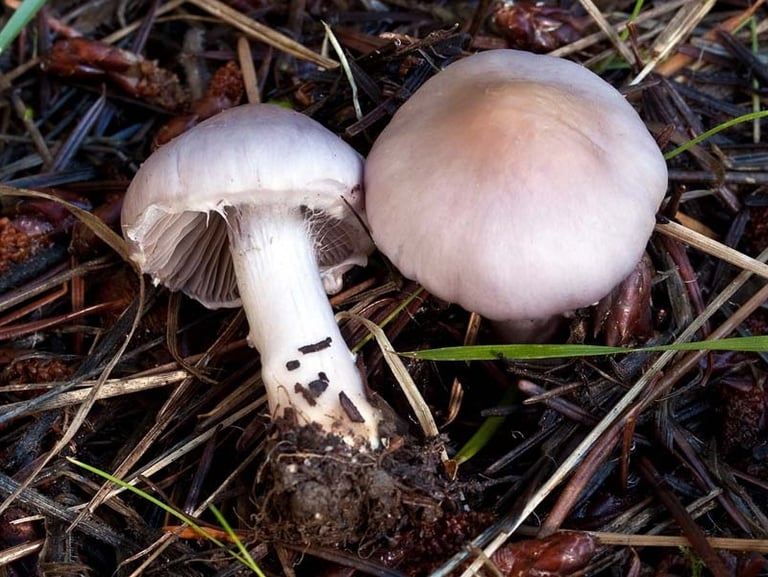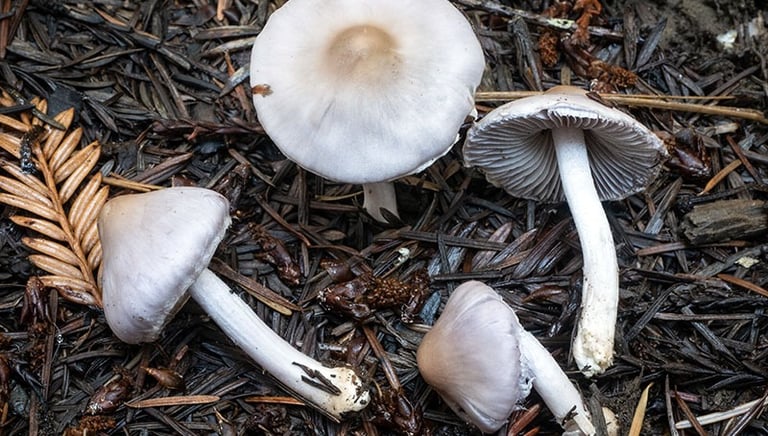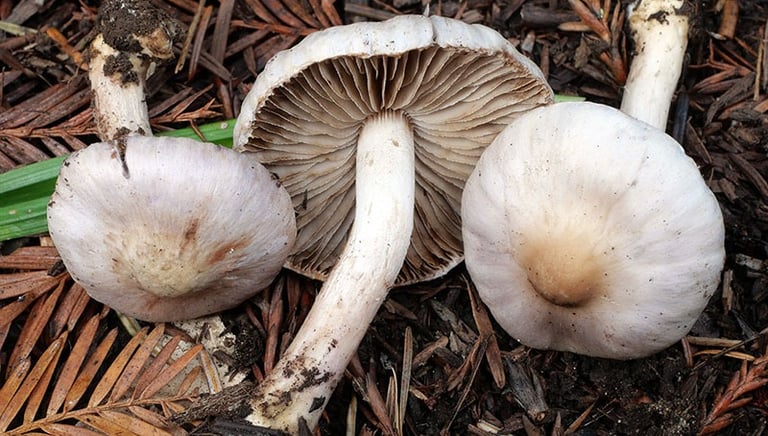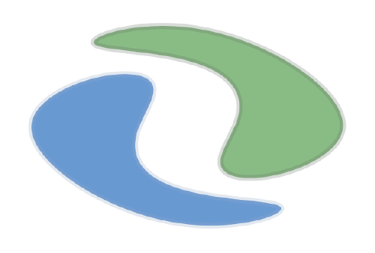Inocybe Lilacina


Image by Michael Wood
Hygrophoropsis aurantiaca, also known as the false chanterelle, is a mushroom species that is found in North America and Europe.
Description
1. Cap: The cap of Inocybe lilacina is typically lilac to pinkish-lilac in color, and is usually smooth or slightly fibrillose (having tiny fibers). It is usually convex or conical in shape when young, but becomes flatter with age. The cap is typically between 2-6 cm in diameter.
2. Gills: The gills of Inocybe lilacina are attached to the stem, and are usually pale to dark brown in color. They are usually slightly crowded together, and have tiny notches (serrate) on the edges.
3. Stem: The stem of Inocybe lilacina is typically lilac or pinkish-lilac in color, and is usually slightly fibrillose. It is typically equal in diameter or slightly thicker at the base, and can be up to 10 cm tall.
4. Spore print: The spore print of Inocybe lilacina is usually rusty-brown in color.
5. Habitat: Inocybe lilacina is commonly found in mixed forests, often growing on the ground in groups or clusters, especially in the fall.
6. Lookalikes: Inocybe lilacina can be easily confused with other Inocybe species, some of which are poisonous. The species Inocybe geophylla, for example, is known as the "white fibercap" and is similar in appearance to Inocybe lilacina, but has white gills and is poisonous. Another potential lookalike is the species Inocybe rimosa, which also has lilac colors on the cap and stem, but has a more wrinkled or "torn" appearance to the cap, and the gills are not serrate. It is important to be very careful when identifying Inocybe species, as many of them are poisonous.









